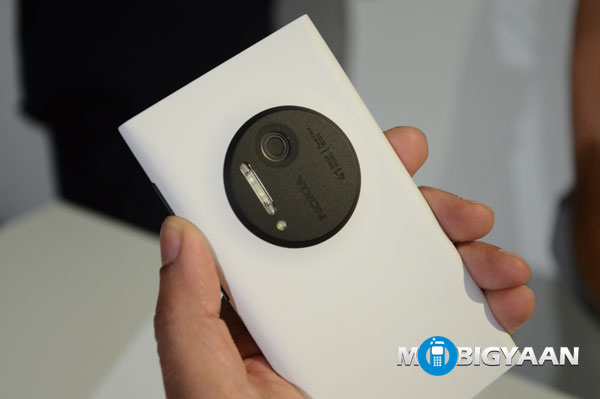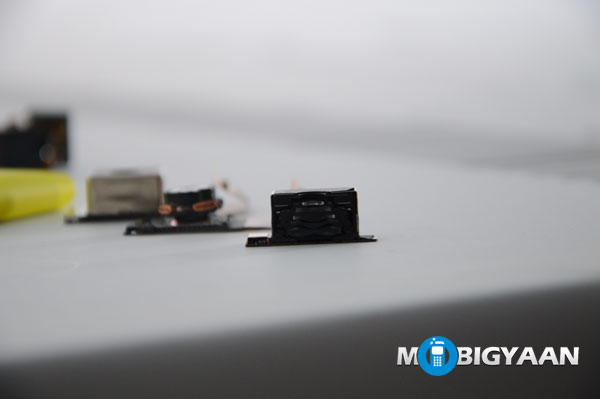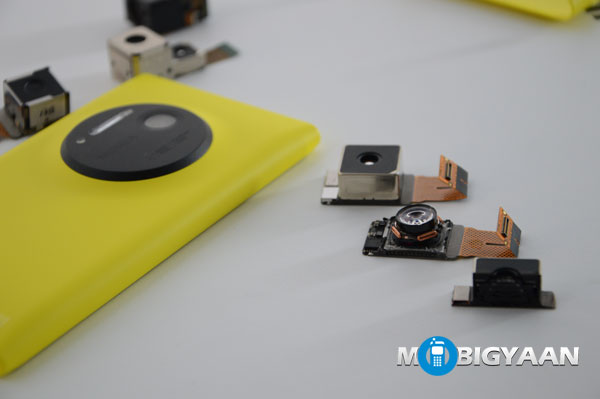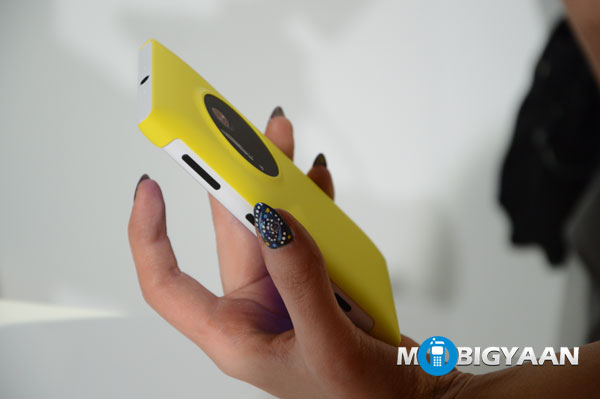We are not talking about a mobile, neither are we talking about a camera. Its a whole new level. Its the Nokia Lumia 1020. The Nokia Lumia 1020’s imaging capability outshines and overshadows the rest of the features its got as a smart phone. So lets dive in and check out the details of this beast of a camera. In papers, the Lumia’s 41 megapixel camera puts most of the entry level DSLRs to shame. When the PureView 808 was launched, it proved that Nokia is way ahead of the rest, in the megapixel race. To many 41 megapixel sounded insane. Many wondered what would they do with such a huge image. But Nokia saw the PureView 808 as an experimental device. Little did we realize that it was a pilot launch, setting the background for a device like the Lumia 1020.

At the launch event in New York, we had a quick Q and A session with Dr Juha Alakarhu, Head of Imaging technology in Nokia. The session was an eye opener. He explained a lot of technical details and research information that went into the design and development of the Lumia 1020 camera module.
To capture a great looking image, it has to have the subject defined in sharpness. The color contrast must be realistic and the exposure setting must be ‘just’ right. Provided I have all these right by the books, I still can’t click an appealing image, if my frame composition is not perfect. Photography is not just capturing the right moment, but also framing the shot perfectly. The Lumia 1020 helps achieve both these. Its amazing camera with the large sensor enabled higher performance to capture stunning details. Once you have clicked an image by zooming in and you feel that you must have composed the frame better, you can actually unzoom the entire frame and see the whole picture. Now you may recompose or select a different area in the picture to zoom in, all the while retaining the stunning details captured by the mammoth 1/1/5″ sensor in Lumia 1020.
The 41MP sensor can capture 34MP and 38MP image files at 16:9 and 4:3 aspect ratios respectively. But the best part is that the Lumia 1020 captures a 5MP over-sampled image along with every shot. The oversampling algorithm is very complicated and highly effective according to Dr Juha Alakarhu. He says that data 7 pixels around each pixel is used to oversample the pixel with additional data to ensure a sharp, natural and low noise end result. The 5MP image is ideal for sharing and printing. It can be printed on upto A3 size paper. Its small size helps you share it via email or any social networking site. The image captures with 38MP or 34MP can be used to manipulate the capture image to achieve creative results.
The Lumia 1020 offers high resolution zooming. Even at the full optical zoom of 3X, the quality of the image stays sharp. It is achieved by effectively using the sweet center spot of the sensor to capture the image and then over sample it to achieve sharpness. In traditional mobile cameras, the zoom images suffers mega pixel loss and that is compensated by upscaling it, resulting in blurry edges. The Lumia 1020 has a constant f2.2 lens. In photographic terms, a wide aperture like f2.2 results in the subject being in sharp focus while the background is blurred. Also in traditional optical zoom, the f2.2 becomes f4 or f6 as you zoom in. But in Lumia 1020 the f2.2 remains constant through out the zoom range. The minimum distance between the subject and the lens at macro mode is about 15 cm and even at this distance you can zoom in further (3x) without loosing out on focus or aperture width. In common terms, it means you will get a sharp and pleasant image at all conditions of zoom. light levels and proximity to subject.
The Lumia 1020 has 6 lens elements stacked on top of each other. The first 5 elements are made of high quality plastic and the last lens, facing the world, is made made of glass. The entire lens assembly comes from the house of ZEISS. This assembly sits on top of a ball bearing setup with moves with the help of motors to provide optical image stabilizations. The hand shakes and vibrations are detected by a gyroscope and passed on to the OIS system which effectively provide counter shake to the whole lens assembly to help click stable and steady shots. Even in the DSLR only one of the lens is adjusted to counter the image stabilization, while in the Luma 1020 the entire lens assembly is stabilized to ensure high quality images even at extreme conditions.
There was a question raised about the durability of the entire mobile along with its highly complicated lens assembly. Mobiles are subject to drops and accidents much more than a DSLR or even a camera. We use them on a daily basis. Kids at home will want to play with it. How robust is the OIS assembly, 6 element lens system along with the mobile. Dr Juha answered that along with the poly-carbonate body of the mobile, the lens assembly has also been made as robust as possible. Yet you have to take care of it as you take care of any other expensive piece of gadget. I am personally not convinced by the answer. Will have to wait for the drop test videos and also we at Mobigyaan will have to review and test the device personally to come to any conclusion.
At low light conditions, the shutter speed may have to be kept low to allow more light to enter the sensor. This would result in hand shake and blurry images normally. But because of the highly superior OIS in the Lumia 1020, unwanted vibrations are compensated, resulting in high quality images even at low light conditions. Dr Juha also mentioned that the sensor in Lumia 1020 is a Back Side Illuminated type sensor. The BSI sensor allows the light to bypass the wires to reach the photo sensitive area of the sensor. In simple terms it means that, at low light conditions the light signals can be effectively amplified and at the same time keep the noise low, again resulting in sharp images at extreme light conditions.
The Xenon flash in the Lumia 1020 give very high quaility of flash light output and for a extremely short pulse duration. Use of Xenon flash provide excellent illumination and can reach subject upto 3 meters away. The duration flash ensures that the ambient light is still retained to ensure natural looking pleasant images.
Definitely the Lumia 1020 looks promising and exciting as a great camera mobile. All the features above were seen as demo in the New York launch event. But I will have to test it out myself to certify the spec sheet and white paper promises. So far from all the demos and hand-on experience I have had with Nokia Lumia 1020, I have a gut feeling that it will live up to the expectations of being an awesome camera mobile. It surely will be a great leap for Nokia. But what does it mean to the common buyer. Would he shift his loyalty to iOS or Android and jump on to Lumia 1020, just because it has a great camera? The buyers out there who thought that Nokia is out of the race for market share, Lumia 1020 comes in a surprise. But still a majority of users scream in their heads “Why Windows?”. Nokia is breaking barriers with its hardware and design philosophies. But Windows Mobile OS is yet to mature. It has to catch up with the pace at which Nokia is advancing.
Stay tuned for my insights on the new Nokia Pro Cam application.



